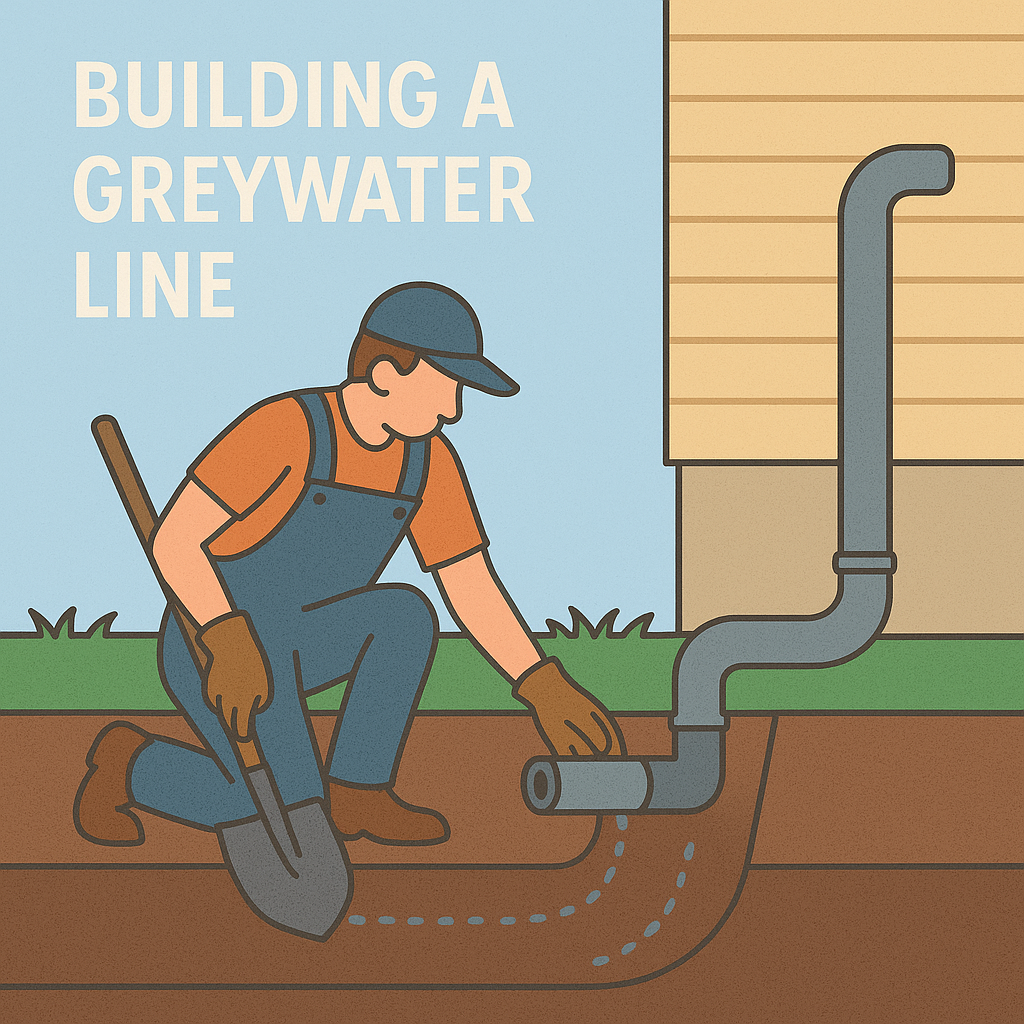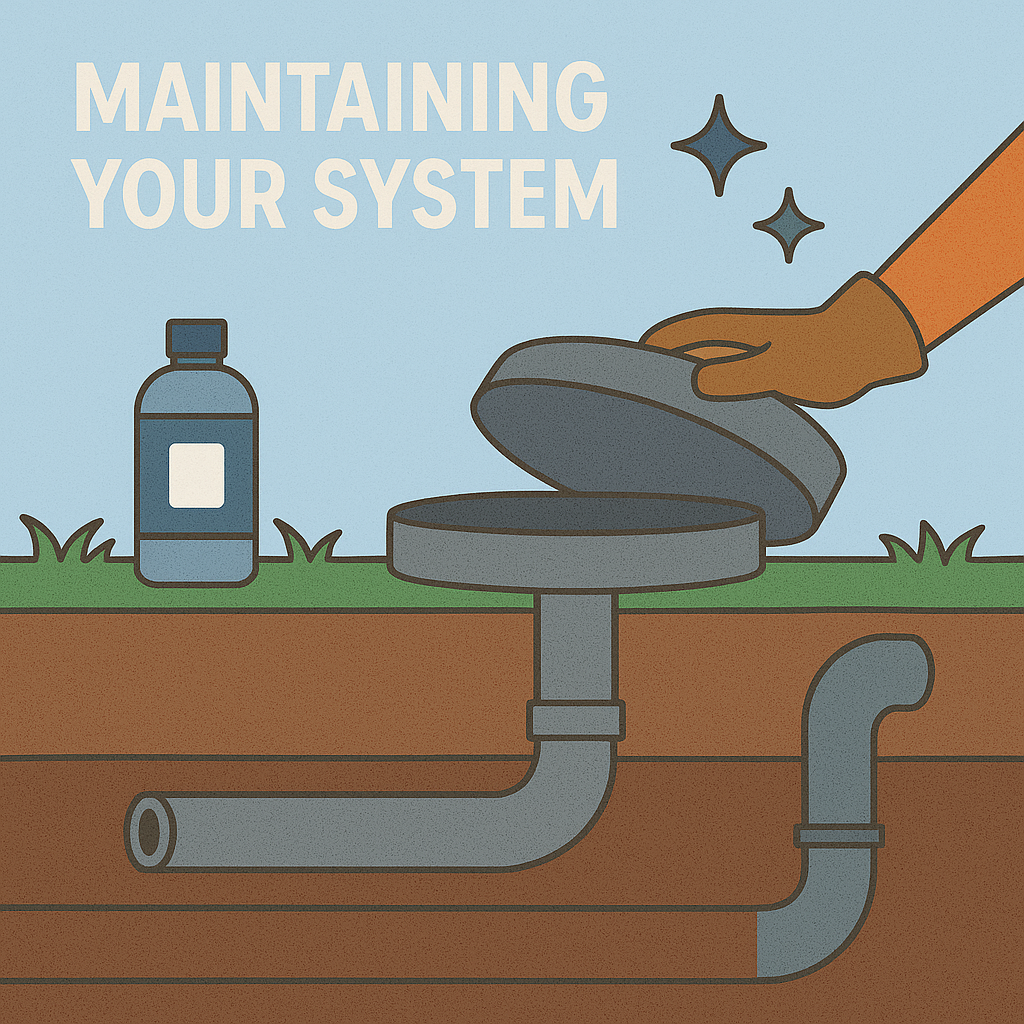How to Create a Simple Greywater System
Building a greywater system is one of the most practical and sustainable steps you can take on your homestead. Greywater refers to gently used water from sources like sinks, showers, or washing machines. Instead of sending that water down the drain, you can recycle it for watering plants, trees, or your garden. By redirecting this water, you reduce waste, conserve fresh water, and cut down on utility costs, all while helping your land thrive.
For off-grid landowners and homesteaders in Utah, a greywater system is especially valuable. Many rural areas have limited access to city water or rely on wells, so reusing what you already have makes a big difference. The good news is that you can build a basic system using common materials and simple planning.
1. Understand What Greywater Is
Greywater is any wastewater that hasn’t come into contact with toilet waste or harsh chemicals. It usually comes from sources such as bathroom sinks, showers, tubs, and laundry machines. This type of water can safely be reused for irrigation or landscape use once it’s properly filtered.
It’s important to distinguish greywater from “blackwater,” which comes from toilets or kitchen sinks with food and grease residue. Blackwater should never be reused without professional treatment. Greywater, on the other hand, is perfectly usable as long as you choose safe soaps and manage how it’s distributed.
When used correctly, greywater can nourish your soil, reduce your overall water usage, and help your plants stay hydrated even in Utah’s dry climate.
2. Plan Your System Layout
Before building your system, take time to map out where your greywater will come from and where it will go. The simplest setups use gravity to direct water from your house or RV to a garden or planted area downhill.
If your home has a washing machine or shower drain that’s easy to access, that’s usually the best starting point. From there, you can run a hose or PVC pipe to direct water into an outdoor distribution area. Make sure you choose a location far enough from your home foundation or any drinking-water wells to prevent contamination.
A good plan includes:
Identifying your greywater source (sink, shower, or washer)
Choosing a distribution area for watering plants
Adding a small filter or mulch basin to trap debris
Ensuring proper slope for drainage
A thoughtful layout saves you from future maintenance issues and keeps your system simple but effective.
3. Build the Greywater Line
Once your plan is ready, you can install the plumbing or piping needed to carry the water outdoors. For a basic system, this can be as simple as attaching a diverter valve under your sink or behind your washing machine. The valve lets you choose whether to send water to the greywater line or the regular drain.
Use flexible, durable tubing or PVC pipe to move the water to your chosen irrigation area. You’ll want to direct it into a mulch basin — a shallow pit filled with wood chips or gravel that filters the water before it soaks into the soil. This keeps your system natural and low-maintenance while preventing clogs or pooling.
Helpful materials to have on hand:
Diverter valve (for directing water flow)
PVC pipe or flexible tubing
Hose clamps and fittings
Shovel for digging mulch basins
Mulch or gravel for natural filtration
Even a simple gravity-fed system can make a big difference in your homestead’s water efficiency.
4. Use the Water Wisely
Not all plants react the same way to greywater, so use it strategically. Avoid spraying it directly on edible leaves or vegetables that grow close to the soil. Instead, use it to water fruit trees, shrubs, ornamental plants, or landscape areas.
Stick to biodegradable soaps, detergents, and cleaning products labeled as “greywater-safe.” Avoid bleach, borax, and synthetic fragrances, which can harm your soil over time. You’ll be surprised how well plants respond when the water they receive is clean, natural, and full of nutrients.
Greywater is best used right after collection, not stored for later use. Letting it sit for more than 24 hours can lead to odors or bacterial growth. A continuous flow system — where the water moves directly from your home to the garden — works best for small homesteads.
5. Maintain Your System
A greywater system requires very little upkeep, but occasional maintenance keeps it running smoothly. Check your pipes and basins regularly for blockages or buildup, especially if you’re using laundry water that may carry lint or fibers. Replace or refresh mulch every few months to keep your filter area effective.
Keep an eye on how your plants respond. If you notice buildup on the soil surface or changes in growth, flush the system with fresh water or clean the basin. Simple habits like these keep the setup working year-round without major repairs.
Quick maintenance reminders:
Clean filters or mulch pits regularly
Use only natural, low-sodium soaps
Inspect pipes and fittings for leaks
Rotate which areas receive greywater to balance soil health
A few minutes of care each season ensures your system continues saving water for years to come.
FAQs About Greywater Systems
Is greywater safe for gardens?
Yes, when used correctly. Avoid watering edible leaves or root crops directly, and focus on trees, bushes, and ornamental plants.
Do I need a permit to install a greywater system in Utah?
Small, residential systems that reuse water from sinks or washers often don’t require a permit, but always check with your county health department to confirm.
What’s the easiest way to start using greywater?
A washing-machine diversion system is one of the simplest ways to begin since it produces large amounts of reusable water.
Can greywater damage plants?
Not if you use biodegradable soaps and avoid chemical cleaners. Greywater can actually improve soil moisture and fertility over time.
Why It Matters
Creating a simple greywater system helps you live sustainably while reducing your overall water footprint. For Utah homesteaders, it’s an especially smart choice — the region’s dry climate makes water conservation essential. Reusing what you already have not only saves money but also builds long-term resilience on your land.
Whether you’re living off-grid, building your first homestead, or upgrading your property, a greywater system is a straightforward project that offers immediate benefits. It’s one more way to take control of your resources and live closer to the rhythm of the land.
If you’re ready to find property that supports a self-sufficient lifestyle, Mountains West Ranches offers affordable Utah land with owner financing and no credit checks. Start your journey toward sustainable living today.



